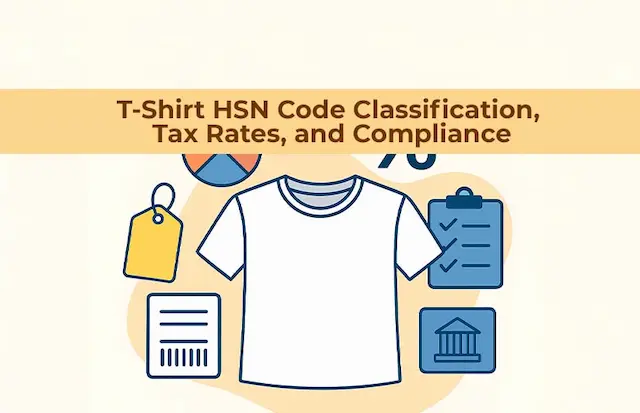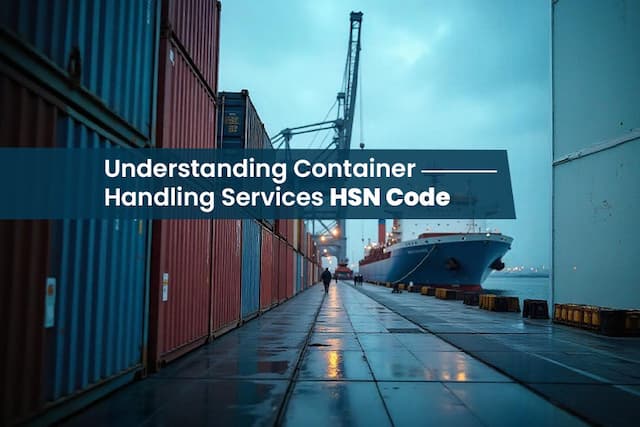The grocery retail world is not only fast but also needs the proper classification of each item, from rice to packaged snacks. It is not about staying compliant; it ensures smooth tax calculations, billing, and inventory management. The HSN code of grocery items plays a pivotal role in facilitating GST filing, mass purchase, supplier invoicing, and inspections.
Suppliers and retailers who are aware of how to code their products in the right categories according to the HSN codes have an advantage in compliance, speed, and credibility. The following blog explains the usage of HSN codes when working with common grocery items and their effective application.
Understanding the Basics of HSN Codes
Harmonised System of Nomenclature (HSN) is a universal system that is structured to facilitate the identification of goods to be taxed and traded in the global markets. India has implemented HSN codes under GST to harmonise the taxation of all products and services.
Each grocery item in its raw or packed form has an HSN code under GST and must be applied to the bills and GST returns. To give an example, products like rice, pulses, flour, spices, oils, and biscuits do not come under the same category because they are all branded as groceries.
Why Grocery HSN Codes Must Be Accurate
The misclassification of commodities can result in the wrong use of tax by grocery sales and distributors; there can be legal sanctions or rejected returns. GST rates vary depending on the goods and the level of processing they undergo. Some unprocessed products, which may be in the form of raw items like unpacked flour, may not have any GST imposed, but processed ones, e.g., packed flour, will be charged 5% or more GST.
For grocery items, the application of the appropriate HSN code assists companies in promoting precise billings, eliminating tax disputes, and ensuring clean auditing trails.
Examples of Common Grocery HSN Codes
Here’s an example of some grocery products identified by HSN –
- Rice (HSN 1006) – If it is unbranded and unpacked, it is often not liable to tax.
- Wheat Flour (HSN 1101) – Varied depending on whether it is branded or not.
- Pulses (HSN 0713) – Pulses are tax-free when sold loose, and packaged pulses can attract GST.
- Edible Oils (HSN 1507) – GST would be charged as per the type of oil and on the brand name
- Sugar (HSN 1701) – Sugar is normally subject to 5% tax.
- Packaged Snacks (HSN 2106) – Higher GST rate of 12 per cent or 18 per cent.
- Tea/Coffee (HSN 0902/0901) – GST is subject to change-according to the packaging and processing
These examples indicate that a slight dissimilarity in the product’s presentation may cause a switch in the GST rate–showcasing the importance of using the right HSN code.
Impact on GST Invoicing and Filing
All B2B and B2C invoices will have to mention the HSN code and the rate that will apply to the concerned GST. It is compulsory in cases of businesses whose turnover is 5 crore and more annually. Smaller dealers should also have HSN codes when making supplies to registered businesses or state departments.
Due to the HSN code of grocery items, there will be GST compliance in case of dealing with digital platforms, the e-way bills will be easy to generate, and help in avoiding notice or fine during a GST audit.
Inventory and POS System Integration
Current retail depends on automation using POS and ERPs. These systems need to have the right HSN codes to create SKUs and to get the prices, tax calculation, and returns.
Retailers using the consistent grocery HSN code system across their inventory avoid mismatching of products and duplicate records, as well as manual tax adjustments. This lowers the amount of reconciliation mistakes when submitting GST each month and enhances efficiency at the sales points.
Dealing with Changes in Tax Rates
The GST Council reviews GST rates on grocery items periodically. As an example, recently, changes were brought about in the taxation of pre-packaged and labelled food items. The retailers and suppliers should keep updated and change their HSN classification where necessary.
Tax authorities can issue warnings for using the outdated HSN code of grocery items or incorrect GST rate, which may lead to rejections within the GSTN system.
Tips for Using HSN Codes Correctly in the Grocery Trade
To facilitate the smooth adoption of HSN codes in the grocery trade, the best practices are as follows –
- The new list of GST rates and the HSN code book published by CBIC should always be used
- Maintain the consistency of HSN codes in the bills, inventory, and filings
- Categorise commodities regarding brand quality, packaging, and processing degree
- Educate your billing and accounting staff about code updates and changes in rates
- Apply automation tools which is GST-compliant and up-to-date
Such practice as adherence to a steady HSN code of grocery products safeguards your business against various points of conflict and ensures the comfort and ease of trade affairs.
Classify Smart to Trade Right
Misclassification can deteriorate the quality and prices in the grocery business. Correct HSN code on grocery items helps the retailers and the suppliers to be tax compliant, improve billing accuracy, and also protect them from audits. As GST is increasingly becoming more data-driven and automated, a good grasp of product classification can help and is no longer optional. Smart classification involves identifying any errors and more reliable reputation among the customers and the authorities.
Seeking smart funding for your grocery supply chain? Credlix helps you get paid quicker and work with no cash-flow pressure. With Credlix, you can get finance against collateral-free exports, working capital loans, and invoice discounting–powered by automated analysis using real-time data.
Need Help Finding the Right HSN Code?
Use our free HSN Finder Tool to get instant GST rates and HSN codes for your grocery products. [Try HSN Finder]





